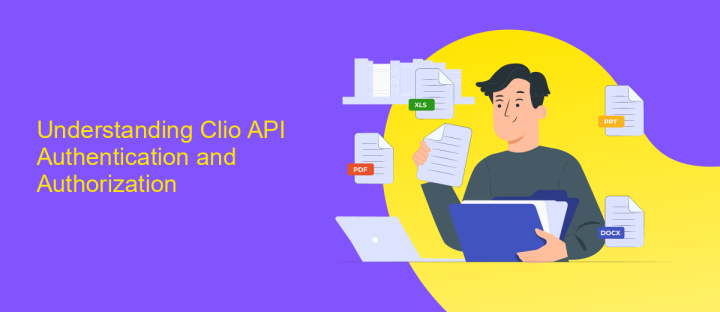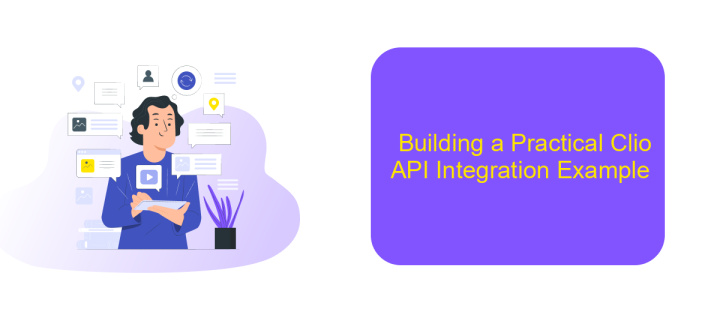Clio API Integration
The Clio API Integration offers a seamless way to enhance your legal practice management by connecting Clio's robust platform with a variety of external applications. This integration enables law firms to automate workflows, improve data accuracy, and streamline operations, ultimately boosting productivity and client satisfaction. Explore how Clio's API can transform your practice into a more efficient and technologically advanced legal service provider.
Introduction to Clio API and its Benefits
The Clio API is a powerful tool designed to enhance the functionality of Clio's legal practice management software. By enabling seamless integration with third-party applications, the Clio API allows law firms to customize their workflows, automate tasks, and improve overall efficiency. As businesses increasingly rely on digital solutions, the ability to connect different systems becomes crucial in maintaining a competitive edge.
- Streamlined data exchange between Clio and other software applications
- Enhanced automation of routine tasks, reducing manual effort
- Improved client management with real-time data synchronization
- Customization options to tailor workflows to specific business needs
- Access to comprehensive documentation and support for developers
Utilizing the Clio API can significantly benefit legal professionals by providing a more cohesive and efficient system for managing their practice. The API's flexibility ensures that firms can adapt to changing technological landscapes, ultimately leading to better client service and operational success. By leveraging these integrations, law firms can focus on what truly matters: delivering exceptional legal services.
Understanding Clio API Authentication and Authorization

To effectively integrate with Clio's API, understanding the authentication and authorization mechanisms is crucial. Clio API employs OAuth 2.0, a robust protocol that ensures secure access to user data. First, developers must register their application with Clio to obtain a client ID and secret. These credentials are pivotal for initiating the OAuth flow. During this process, users are prompted to grant permissions, defining the scope of access your application will have. This step is essential to ensure that only authorized applications can interact with user data, maintaining privacy and security.
Once the authorization is granted, your application receives an access token, which is used for making API requests. This token must be handled securely and refreshed periodically to maintain uninterrupted access. For those seeking to streamline the integration process, services like ApiX-Drive can be invaluable. ApiX-Drive offers tools to simplify the connection and management of APIs, reducing the complexity of handling authentication manually. By leveraging such services, developers can focus more on building features rather than getting bogged down by integration intricacies.
Key Clio API Endpoints and their Functionality

Clio API provides a robust set of endpoints that facilitate seamless integration with its legal management software. These endpoints enable developers to access and manipulate data, enhancing the functionality of their applications. Understanding the key endpoints is essential for efficient API utilization.
- Contacts Endpoint: This endpoint allows for the creation, retrieval, updating, and deletion of contact information, ensuring comprehensive client management.
- Matters Endpoint: Developers can manage case details, including creating new matters, updating existing ones, and retrieving specific case information.
- Tasks Endpoint: This endpoint facilitates task management by allowing the creation, updating, and deletion of tasks, helping users stay organized.
- Time Entries Endpoint: Users can track billable hours by creating, updating, and retrieving time entries, essential for accurate billing and reporting.
- Documents Endpoint: This endpoint supports document management by enabling the upload, retrieval, and deletion of files, ensuring efficient document handling.
By leveraging these key Clio API endpoints, developers can significantly enhance the functionality of their applications. Each endpoint provides specific capabilities that streamline legal management processes, making it easier for law firms to manage their operations effectively.
Building a Practical Clio API Integration Example

Integrating with the Clio API can significantly enhance your legal practice management by automating tasks and streamlining workflows. To start, you need to familiarize yourself with Clio’s API documentation, which provides comprehensive details on endpoints, authentication, and data formats. A solid understanding of RESTful services and JSON will be beneficial as these are fundamental to working with Clio API.
Before diving into coding, ensure you have access to Clio’s API by obtaining an API key through your Clio account. With the key in hand, you can begin crafting a practical integration example that suits your specific needs. Consider what functionalities you wish to automate, such as client data management or billing processes.
- Set up your development environment with necessary tools like Postman for API testing.
- Authenticate your application using OAuth 2.0 to securely access Clio’s resources.
- Choose a programming language, such as Python or JavaScript, for building your integration.
- Start with simple GET requests to retrieve data, then advance to POST requests for data creation.
By following these steps, you can develop a robust Clio API integration that enhances your practice’s efficiency. Testing and iterating on your code will ensure a seamless integration, providing real-time data access and improved client management. Remember, a well-planned integration can save time and reduce manual errors, ultimately benefiting your legal operations.
- Automate the work of an online store or landing
- Empower through integration
- Don't spend money on programmers and integrators
- Save time by automating routine tasks
Best Practices and Troubleshooting for Clio API Integrations
When integrating with the Clio API, it is crucial to follow best practices to ensure a smooth and efficient process. Start by thoroughly reviewing Clio's API documentation to understand its capabilities and limitations. Ensure that your application is securely authenticated using OAuth 2.0, and always handle API keys with care to prevent unauthorized access. Implement robust error handling to gracefully manage API response errors and rate limits. Regularly monitor API usage and performance to identify any potential issues early. For seamless integration, consider using ApiX-Drive, a service that simplifies the process by providing pre-built connectors and automation tools, allowing you to focus on core functionalities without worrying about underlying complexities.
Troubleshooting Clio API integrations often involves diagnosing connectivity issues, verifying authentication credentials, and ensuring that API endpoints are correctly configured. If you encounter unexpected behavior, check the API status page for any reported outages or disruptions. Utilize logging to capture detailed information about API requests and responses, which can be invaluable for identifying the root cause of issues. Engage with Clio's support community or technical support team for assistance with persistent problems. By adhering to these best practices and utilizing tools like ApiX-Drive, you can enhance the reliability and performance of your Clio API integrations.
FAQ
What is Clio API, and how can it be used for integration?
How do I get started with Clio API integration?
What are the common use cases for integrating with Clio API?
How can I automate data transfer between Clio and other applications without coding?
What should I consider when building a custom integration with Clio API?
Apix-Drive will help optimize business processes, save you from a lot of routine tasks and unnecessary costs for automation, attracting additional specialists. Try setting up a free test connection with ApiX-Drive and see for yourself. Now you have to think about where to invest the freed time and money!


